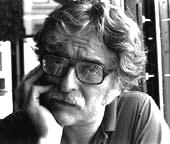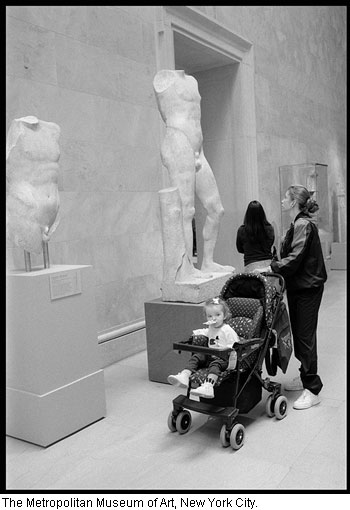This situation has not been helped by the fact that many of the SLR-style digital cameras that we use are bigger and more noticeable than the point-and-push and rangefinder film cameras that used to be the tool of choice for this kind of photography. Herewith, a few pointers for those who love to pretend they are Cartier-Bresson, Elliott Erwitt or Gene Smith - but donít like to get hit. Ask permission. This is my least favorite way; it doesnít produce the kind of picture that I want. But it can produce a wonderful, direct environmental portrait. If you have the charm to elicit a yes from strangers, you may get some good pictures.
The beach, the pier, the county fair, wherever people (especially tourists) congregate to relax and enjoy themselves are all good places to people watch. You can, of course, blend in more with the tourists if your camera has a large, exceptionally colorful neckstrap. Is it true that in Europe you can shoot in almost any major city if you wear a Hawaiian shirt and travel with a companion who is wearing shorts and a floppy hat? In any respect, dress a little like a amateur. Do not carry a lot of gear or what is obviously a large camera bag. You may miss a shot without your super long zoom, but youíll miss a lot more weighed down with gear. Every once in awhile, use an extreme wide-angle lens. Get relatively close to your subject, but have him to one side of your frame. He thinks you are shooting past him. Donít stare at your subject. Stare at your camera and twiddle some of its knobs. Look around for a street sign or building number, check your watch or just stare into space like you were some dumb photographer. And when you do shoot, the camera with its preset exposure and focus comes up to eye and goes right back down again. You should know what the frame is going to be before you bring the camera to your eye. If you do make eye contact with your subject, recognize it, nod, smile and do not walk away. If he wants to chat, chat.
"Aha!" says you, "I canít shoot without looking through the camera." Tell Edward Weston and Richard Avedon that. What you mean is you canít frame without raising your camera to your eye - and you can. Not at first. But soon, with one or two lenses, you will get a high percentage of effective frames. And, hopefully, you will get a few frames you didnít plan on - which are really better than what you would have done with the camera to your eye. Most important: People are often funny, but you are
not there to make fun of them. Hereís a simple test
for you when you edit your pictures. Would you give
the subject of the photograph a print of the
photograph? If not, donít bother to print it. © Bill Pierce |
|
|
Write a Letter
to the Editor |

 Shoot in public places, especially where there are a
lot of tourists. I love to shoot in museums. As a
matter of fact, so do an awful lot of photographers.
They are nice places to be even on those days when the
photos donít seem to be coming too easily. People
certainly arenít looking at you. And, if they are,
they presume that you are taking pictures of the art.
Shoot in public places, especially where there are a
lot of tourists. I love to shoot in museums. As a
matter of fact, so do an awful lot of photographers.
They are nice places to be even on those days when the
photos donít seem to be coming too easily. People
certainly arenít looking at you. And, if they are,
they presume that you are taking pictures of the art.
 Which brings us to the ultimate in covert street
shooting - shooting from the hip without ever raising
the camera to your eye. There are times when it is
just not appropriate to raise a camera to your eye and
intrude on people. For me this has been at various
religious services and funerals or sometimes just
private moments between people. Itís also on the New
York subway, but thatís just the fear of being trapped
between stations with someone who wants to hurt me,
very badly. I justify this because Walker Evans
photographed on the New York subway with a concealed
camera.
Which brings us to the ultimate in covert street
shooting - shooting from the hip without ever raising
the camera to your eye. There are times when it is
just not appropriate to raise a camera to your eye and
intrude on people. For me this has been at various
religious services and funerals or sometimes just
private moments between people. Itís also on the New
York subway, but thatís just the fear of being trapped
between stations with someone who wants to hurt me,
very badly. I justify this because Walker Evans
photographed on the New York subway with a concealed
camera.